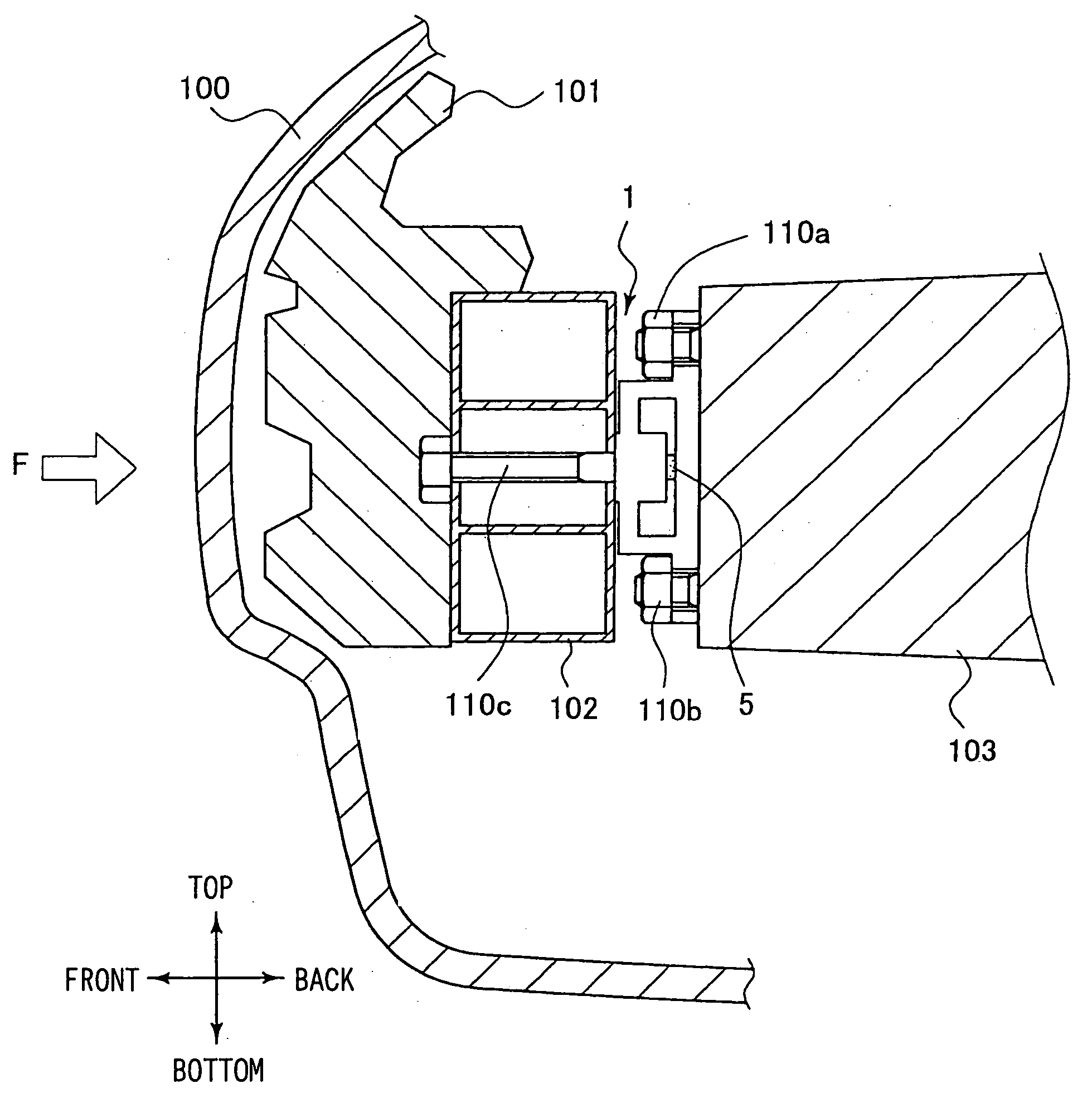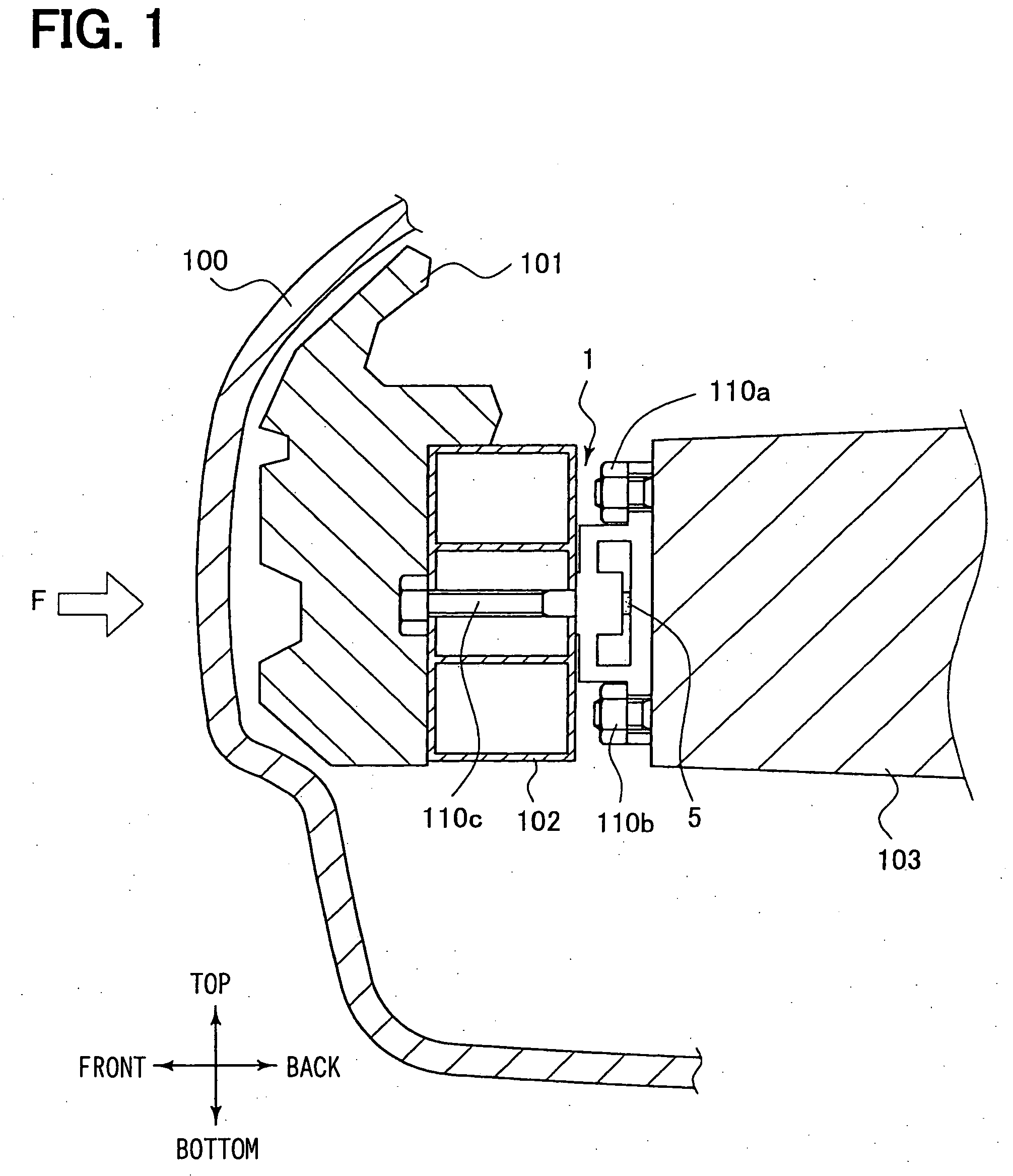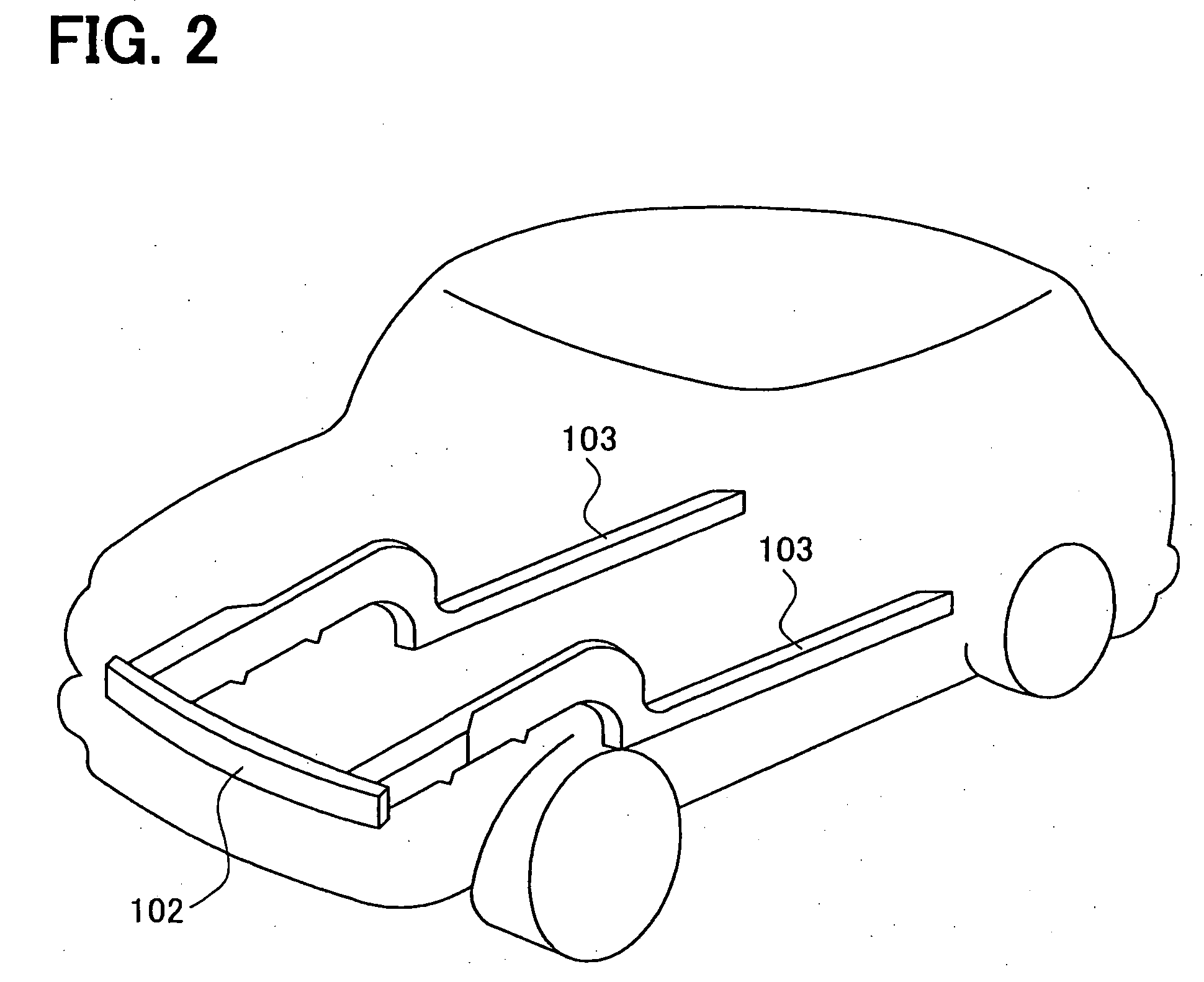Load-detecting device
a technology of detecting device and supporting member, which is applied in the direction of bumpers, instruments, force/torque/work measurement apparatus, etc., can solve the problems of erroneous actuation of above-described safety mechanism, inability to accurately control the inflation of airbags as described above, and the passenger mortality rate has been declining. , to achieve the effect of increasing the stiffness of the supporting member in the direction other than the detection direction, and reducing the risk of injury
- Summary
- Abstract
- Description
- Claims
- Application Information
AI Technical Summary
Benefits of technology
Problems solved by technology
Method used
Image
Examples
second embodiment
[0055]FIG. 5 shows the present invention, illustrating a simplified structure of a passenger seat 200 of a vehicle equipped with the load-detecting device 1. The passenger seat 200 includes a bottom frame section 201 for forming a seating face, a back frame section 202 for a back rest face, and a connecting section 204 for pivotally supporting the back frame section 202 to the bottom frame section 201. The passenger seat 200 is composed of a seat cushion 210a on the seating face and a seat back 210b serving as a back rest. An arm 205 is fixedly provided on a floor 300 of the vehicle. The load-detecting device 1 according to the present invention is provided between the arm 205 and the bottom frame section 201 so as to be able to detect a load applied to the seat, that is, the weight of a passenger.
first embodiment
[0056]FIG. 6 is an enlarged view of the load-detecting device shown in FIG. 5. The load-detecting device 1 includes the load transfer member 2, the supporting members 3, the load sensor supporting member 4, and the load detection sensor 5 as the load-detecting device shown in FIG. 3. In the load-detecting device shown in FIG. 5, however, the load transfer member 2 and the supporting members 3 form an integral structure, and the supporting members 3 are fitted and fixed by upwardly projecting portions provided on the both ends of the load sensor supporting member 4. A fastening member 110d serves to be fastened to the frame section 201 forming the seating face, whereas a fastening member 110e serves to be fastened to the arm 205 fixedly provided on the floor 300 of the vehicle. Each of the fastening members 110d and 110e is composed of a bolt and a nut in this embodiment. Since the principle of load detection is the same as that of the first embodiment described above, the detailed d...
PUM
| Property | Measurement | Unit |
|---|---|---|
| force | aaaaa | aaaaa |
| elastic displacement | aaaaa | aaaaa |
| stiffness | aaaaa | aaaaa |
Abstract
Description
Claims
Application Information
 Login to View More
Login to View More - R&D
- Intellectual Property
- Life Sciences
- Materials
- Tech Scout
- Unparalleled Data Quality
- Higher Quality Content
- 60% Fewer Hallucinations
Browse by: Latest US Patents, China's latest patents, Technical Efficacy Thesaurus, Application Domain, Technology Topic, Popular Technical Reports.
© 2025 PatSnap. All rights reserved.Legal|Privacy policy|Modern Slavery Act Transparency Statement|Sitemap|About US| Contact US: help@patsnap.com



